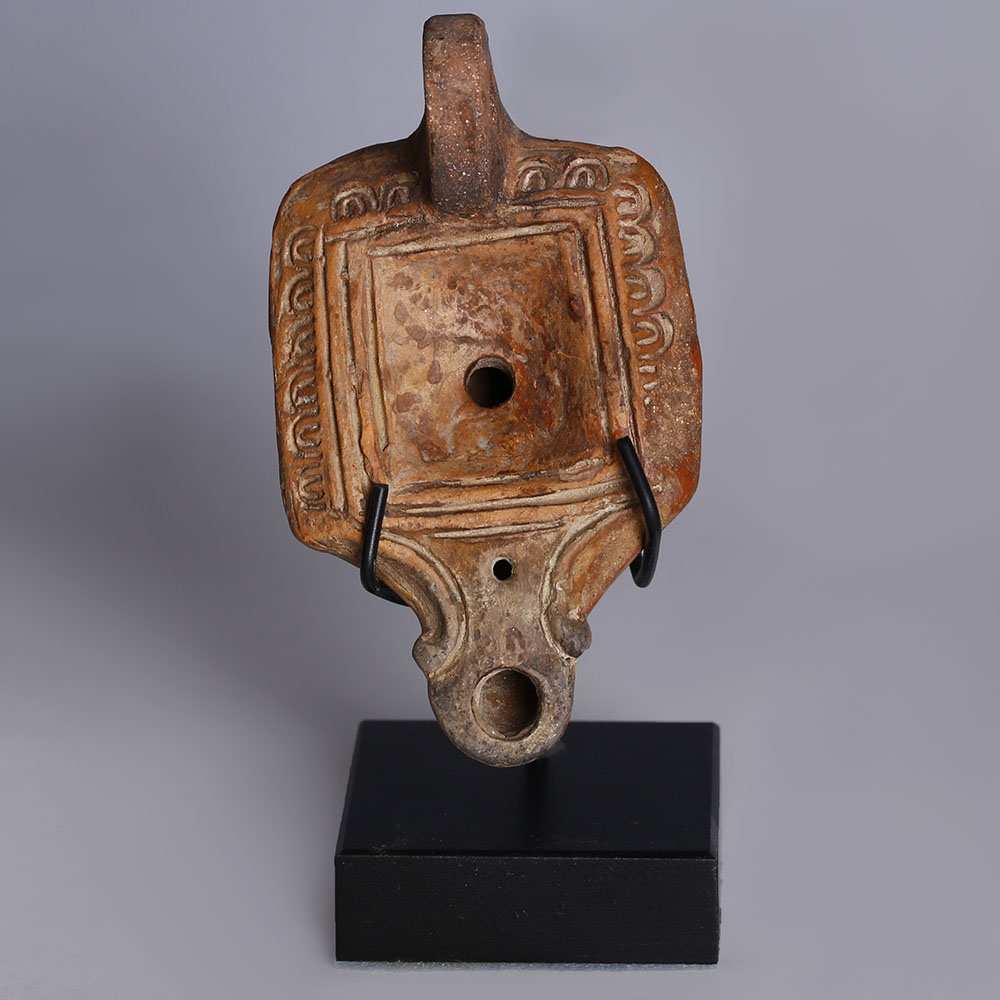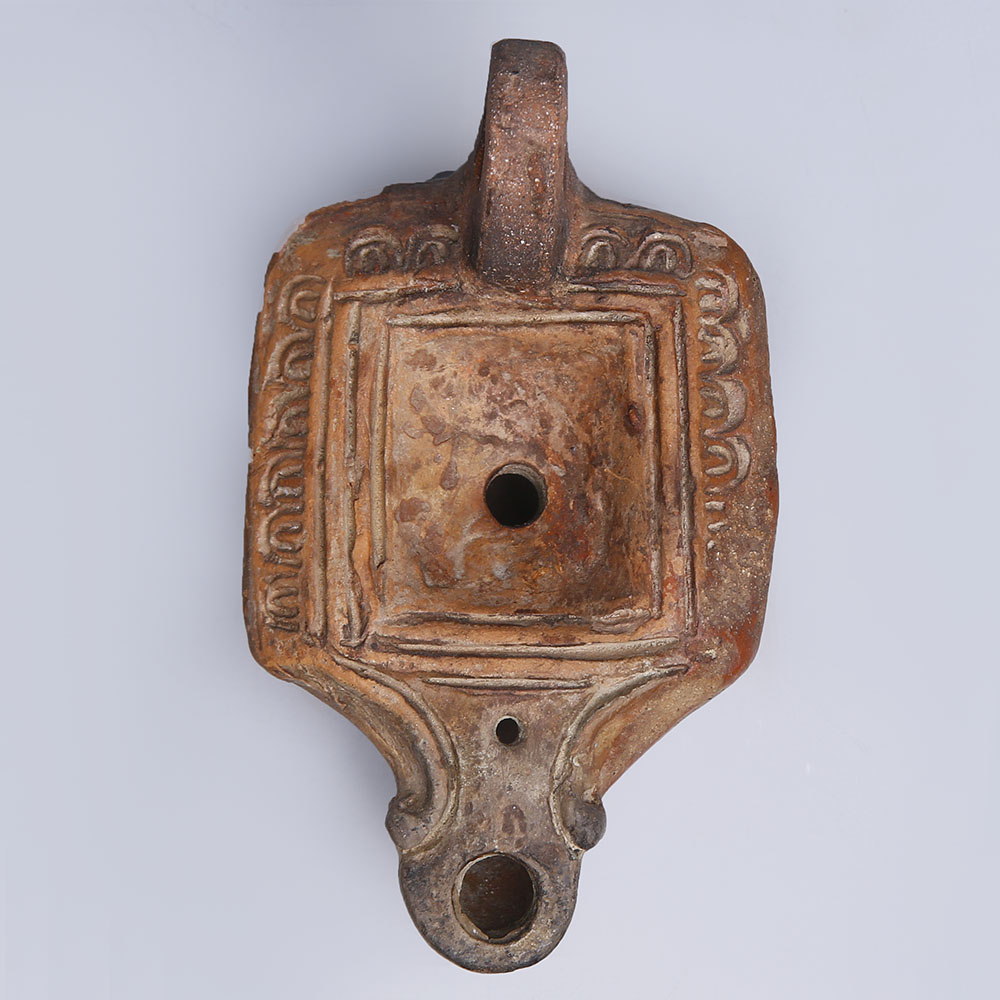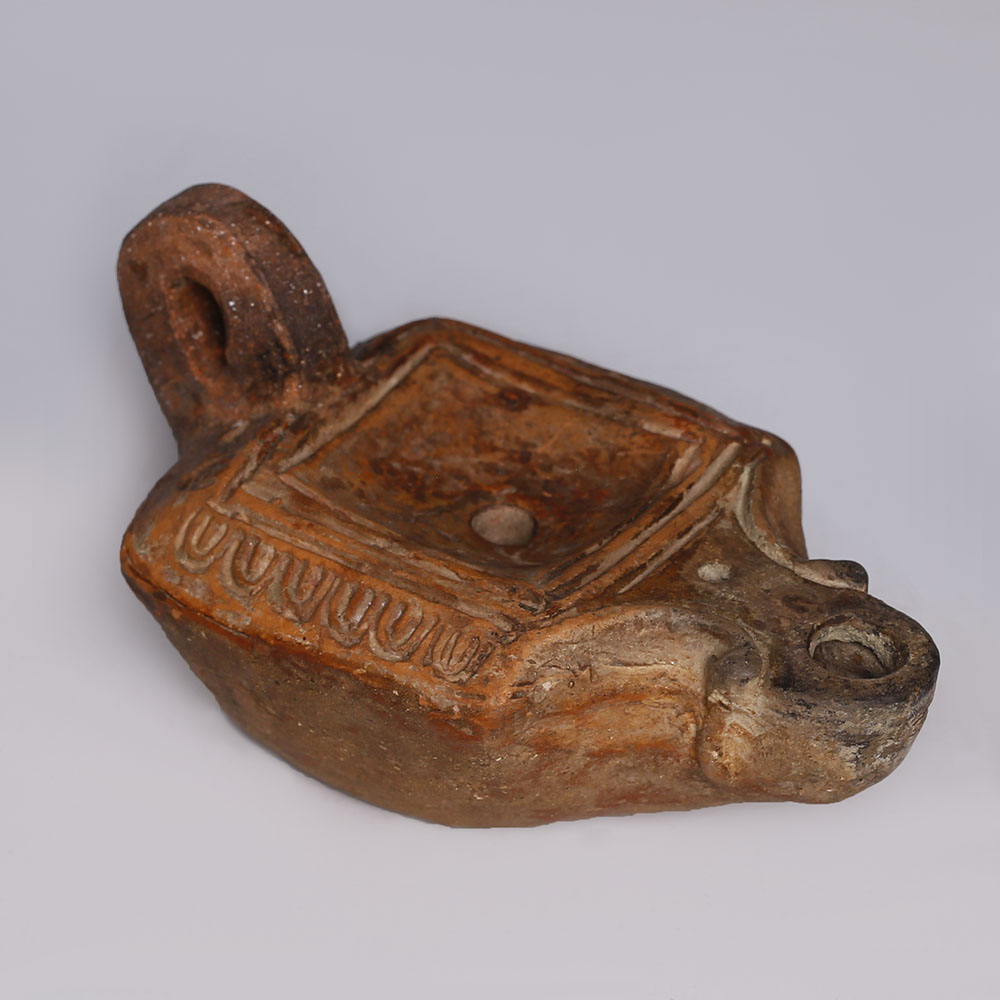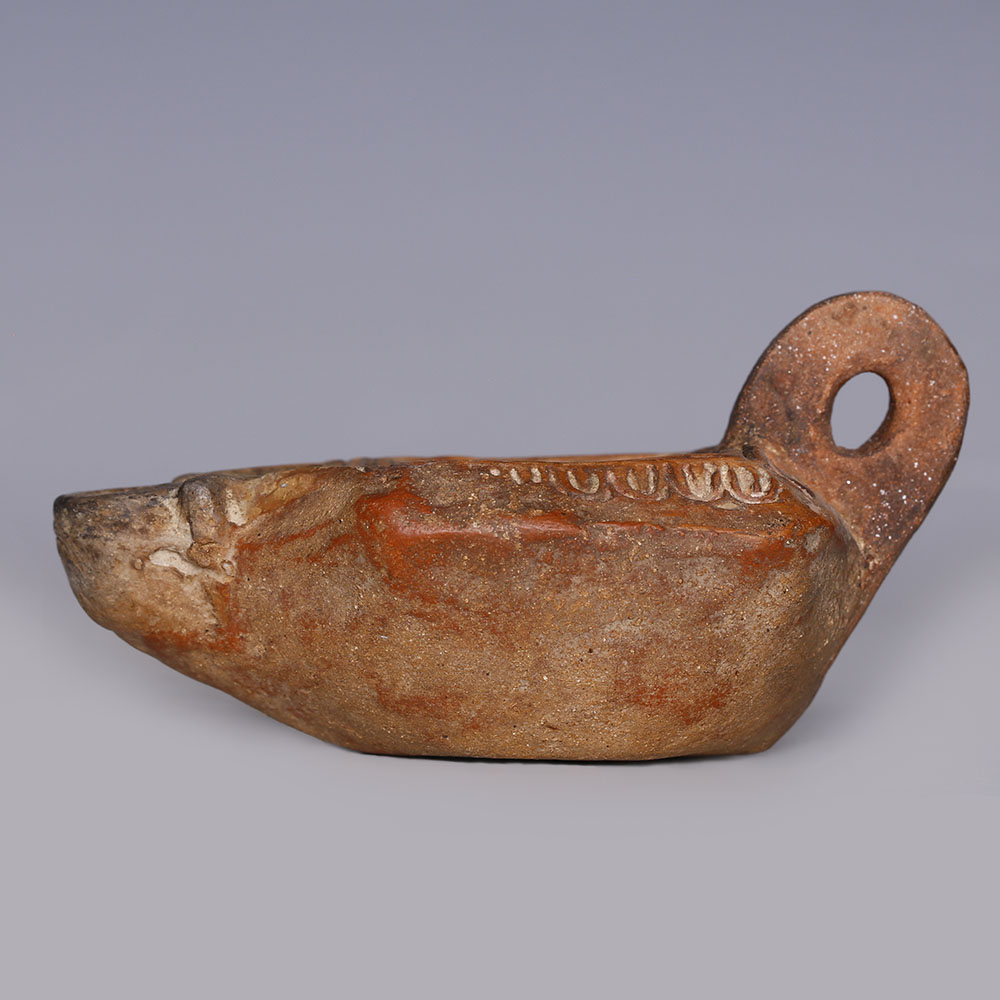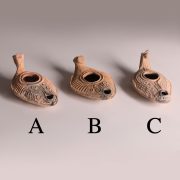During the Roman Empire, a lamp was originally called a ‘lychnus’, from the Greek ‘λυχνος’, with the oldest Roman lamps dating back to the third century BC. It is thought that the Romans took the idea for lamps from the Greek colonies of Southern Italy. During the Roman Empire, it became commonplace to use lamps in funeral ceremonies and for public purposes. Over time, the manufacture of lamps increased, and so did the variation in decoration, which depended mainly on the shape and size of the lamp. The square style shown by this beautiful example is said to have originated from the eastern part of the Mediterranean basin. There are examples present from Pompeii and Herculaneum and outside of Italy, there is evidence that the square bodies were also manufactured in Africa by the signatures carved. However, there is a lack of archaeological data to form a definite answer.
Roman Terracotta Square Oil Lamp
$367.47
A fine Roman terracotta oil lamp featuring a square biconical flattened body, a volutes nozzle and a pierced round lug handle at the back. The concave discus displays two incised squares with a central filling-hole and one to the neck of the nozzle. The shoulders are decorated with a band of geometric curved motifs, the base is flat. This lamp can be catalogued as Bailey type I.
Provenance: From the collection of Arno Jumpertz, Leverkusen, Germany, 1924-1984. Much of the collection was exhibited at the Neus Museum, 1985.
Condition: Fine condition, some black deposit to the nozzle. The oil lamp is mounted on a custom-made stand.
SOLD
| Weight | 134.6 g |
|---|---|
| Dimensions | W 5.5 x H 9.6 cm |
| Culture | |
| Pottery and Porcelain | |
| Region |
